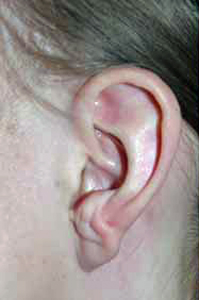Looking old on the outside might be a clue to what’s going on inside your body, according to new research from the American Heart Association.
The study finds that people who have three or four physical signs of aging —a receding hairline, baldness, a crease in the earlobe, or yellow fatty deposits around the eyelid— also have a 57 percent increased risk for heart attack and a 39 percent increased risk for heart disease.
“The visible signs of aging reflect physiologic or biological age, not chronological age, and are independent of chronological age,” said Anne Tybjærg-Hansen, M.D., the study’s senior author and professor of clinical biochemistry at the University of Copenhagen in Denmark.
Tybjærg-Hansen and her colleagues studied nearly 11,000 test participants as part of the Copenhagen City Heart Study. They were 40 or older, and almost half were women.
In the study group, 7,537 of them had frontoparietal baldness, which is a receding hairline at the temples; 3,938 were bald at the top of their heads; 3,405 had an earlobe crease; and 678 had yellow fatty deposits around the eye.
Over a 35-year period, researchers followed the subjects and found that 3,401 of them developed heart disease and 1,708 experienced a heart attack.

Among the four signs of aging cited in the study include a crease in the earlobe (Photo: National Human Genome Research Institute)
Looking at the test subjects both individually and as a group, researchers found that the identified signs of aging were predictors of heart attack and heart disease, or both, without considering traditional risk factors, such as high-blood pressure, cholesterol, smoking, physical inactivity or obesity.
In particular, the study found that fatty deposits around the eye were the strongest single predictor of both heart attack and heart disease.
Each additional sign of aging, among both men and women, suggested an increased risk of heart attack and heart disease. So if an individual initially had a receding hairline but later developed an ear crease, the risk of heart problems increased as well.
The study found that those in their seventies, and those who had those multiple aging signs, had the highest risk of coronary problems.
To gather data for the study, various healthcare workers, including nurses and laboratory technicians, examined the test subjects, recording the amount of gray hair they had; how wrinkled their faces were; the type and level of baldness; and whether or not they had an earlobe crease or eyelid deposits.
These findings, according to the researchers, suggest that doctors and other healthcare workers should look for these external signs of heart problems, while also considering traditional risks.
“Checking these visible aging signs should be a routine part of every doctor’s physical examination,” Tybjærg-Hansen said.


 Science World is VOA’s on-air and online magazine covering science, health, technology and the environment.
Science World is VOA’s on-air and online magazine covering science, health, technology and the environment.